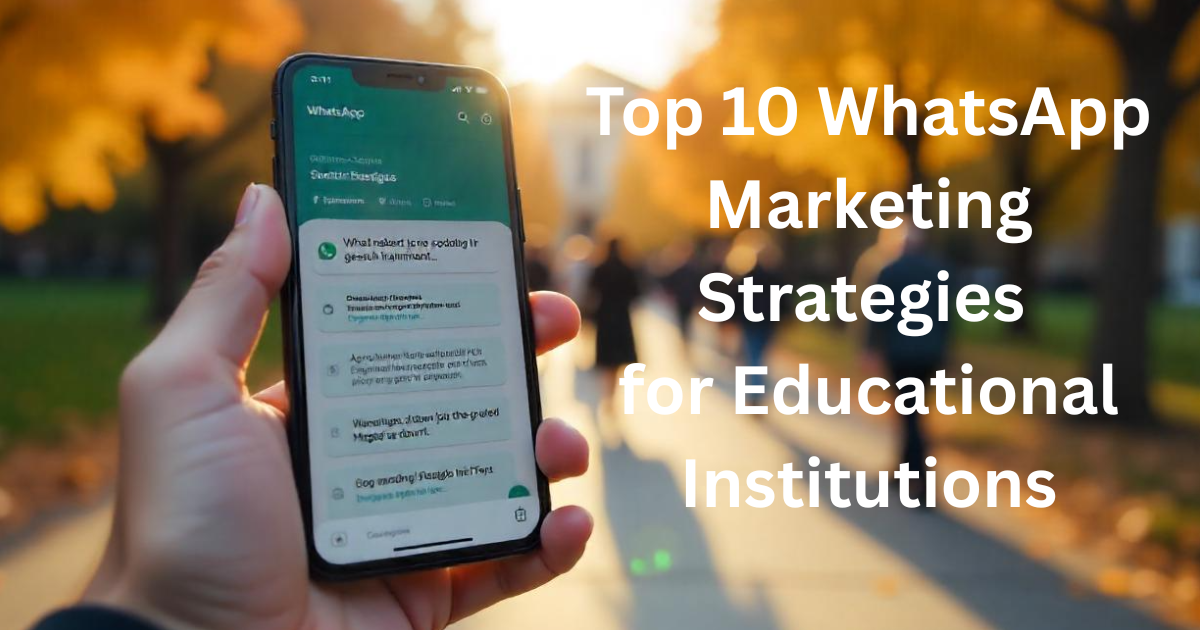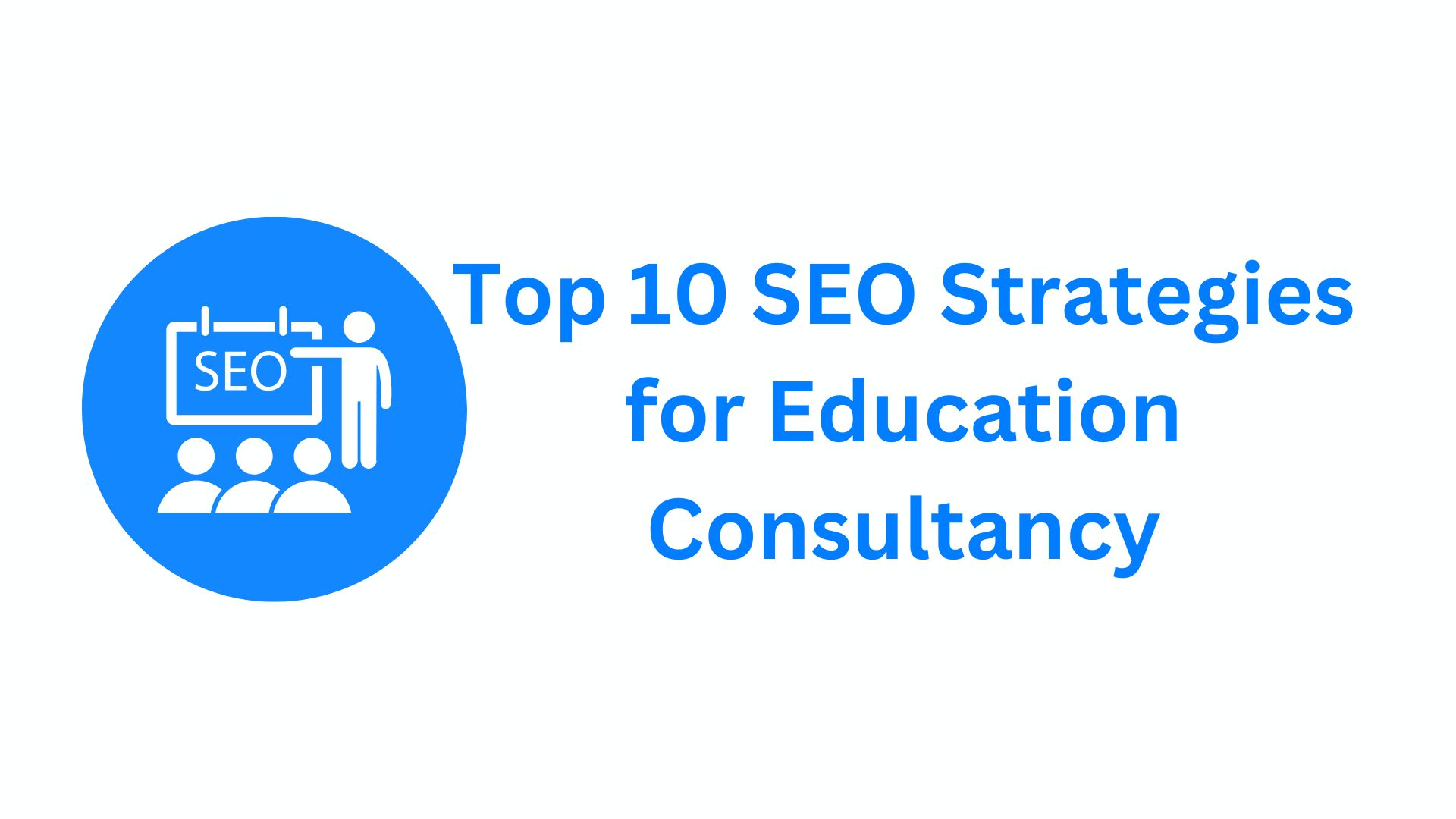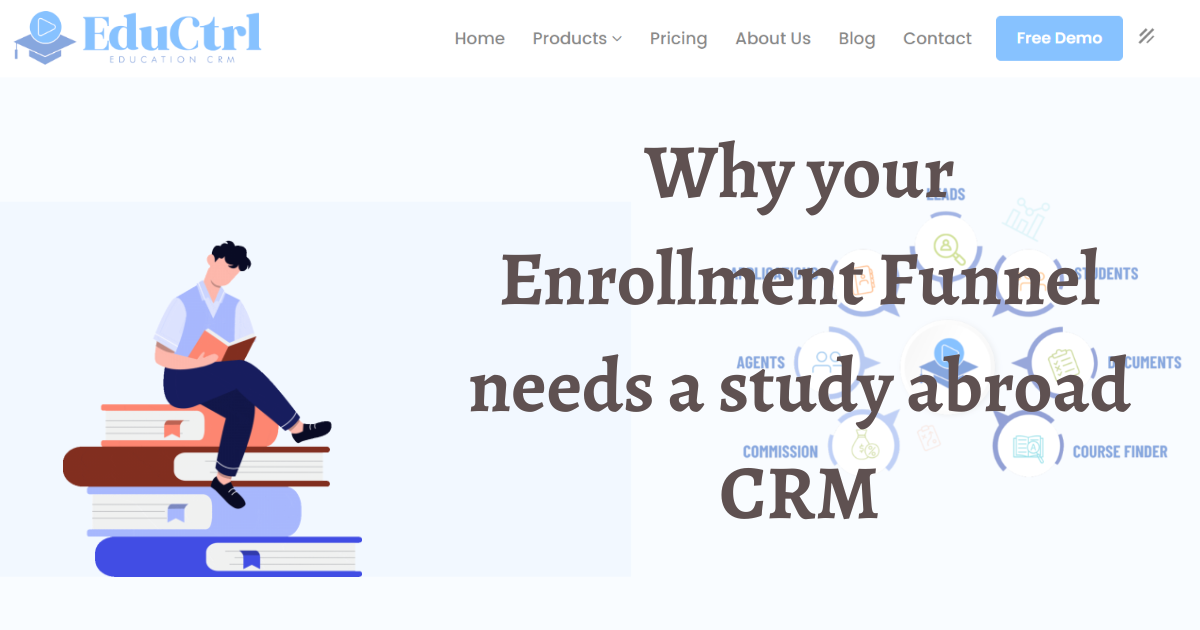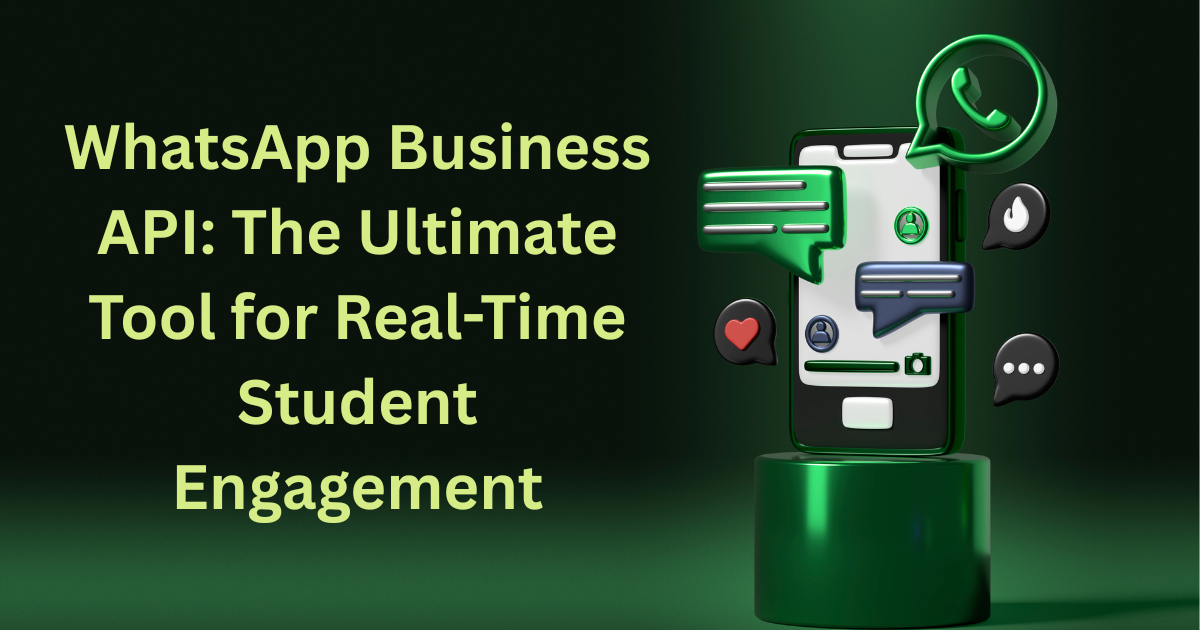Table of Contents

In the digital era, educational institutions face the challenge of staying connected with students, parents, and communities in a fast, meaningful way. Traditional channels like emails often get buried in inboxes, and newsletters may go unread. That’s where WhatsApp steps in—a messaging platform with over 2 billion users worldwide, offering a direct, personal, and versatile tool for communication. For schools, colleges, and universities, WhatsApp isn’t just a chat app; it’s a game-changer for educational marketing.
In this blog, we’ll dive into the top 10 WhatsApp marketing strategies for educational institutions to boost engagement, streamline communication, and enhance outreach. Whether you’re aiming to improve student engagement via WhatsApp, promote events, or connect with parents, these strategies will equip you with actionable ideas. With my five-plus years of experience as a content writer specializing in digital marketing, I’ve seen firsthand how tools like WhatsApp can transform communication—especially in the education sector.
1. Personalized Communication: Make Every Message Count
WhatsApp’s strength lies in its ability to deliver personalized messages. Imagine a student receiving, “Hi Sarah, your science project is due next Friday—need any help?” This personal touch makes recipients feel valued and increases engagement.
How to Implement:
- Build a database of students and parents with key details (e.g., names, grades, interests).
- Use WhatsApp Business API or tools like Twilio to automate personalized messages triggered by events like deadlines or birthdays.
- Keep messages concise yet friendly to maintain a human feel.
Personalization isn’t just a trend—it’s a proven way to enhance student engagement via WhatsApp, fostering a supportive educational environment.
2. Class-Specific Group Chats: Build a Learning Community
Group chats are perfect for creating a sense of community. Teachers can use them to share announcements, discuss assignments, or host informal Q&As.
How to Implement:
- Create groups for each class or subject (e.g., “Grade 10 Math”).
- Set rules: only relevant content, no spam, respect all members.
- Appoint a moderator (teacher or student leader) to keep discussions on track.
Example:
A teacher posts, “Reminder: Quiz tomorrow on Chapter 5. Here’s a quick review PDF!” Students reply with questions, sparking a mini-study session. This is WhatsApp for schools at its best—interactive and immediate.
3. Broadcast Lists: Reach Many with One Tap
Broadcast lists let you send updates to multiple recipients without a group. It’s ideal for broad announcements like school closures or event reminders.
How to Implement:
- Segment your audience (e.g., all Grade 12 parents, prospective students).
- Craft clear, actionable messages: “Join our virtual open house this Saturday at 10 AM—link below!”
- Limit frequency to avoid overwhelming recipients.
Broadcasts are a cornerstone of digital marketing for education, offering efficiency without the chaos of group replies.
4. Automated Responses: Save Time, Stay Responsive
Handling repetitive queries (e.g., “What’s the admission deadline?”) can drain resources. Automated responses provide instant answers, freeing staff for more complex tasks.
How to Implement:
- Use WhatsApp Business’s built-in auto-reply feature for FAQs.
- Integrate a chatbot for advanced queries (e.g., “Type ‘fees’ for payment details”).
- Ensure replies are helpful and include a human contact option.
This strategy boosts efficiency while maintaining trustworthiness—a key EEAT principle.
5. Multimedia Content: Engage Through Visuals
WhatsApp supports images, videos, and documents, making it a dynamic platform for educational marketing. Visuals grab attention and enhance learning.
How to Implement:
- Share video snippets of lessons, infographics on key topics, or PDFs of study guides.
- Highlight campus life with photos of events or facilities.
- Keep files lightweight for quick downloads.
Example:
A short video of a chemistry experiment can make a lesson memorable, while event photos build excitement. Multimedia turns WhatsApp into an engaging storytelling tool.
6. Feedback and Surveys: Listen to Your Audience
Feedback drives improvement, and WhatsApp makes it easy to collect. Whether it’s student opinions or parent satisfaction, quick surveys keep you informed.
How to Implement:
- Use WhatsApp’s poll feature: “Rate today’s workshop: 👍 or 👎?”
- Share links to Google Forms for detailed responses.
- Explain how feedback will improve their experience.
Tip:
A message like, “Your input helps us grow—spare 2 minutes for our survey?” encourages participation. This builds trust and shows you value their voice.
7. Event Promotion: Fill Seats with WhatsApp
From webinars to cultural festivals, events need promotion. WhatsApp offers a direct, cost-effective channel to spread the word.
How to Implement:
- Create eye-catching messages with event details and multimedia (e.g., a teaser video).
- Send reminders: “Don’t miss tomorrow’s science fair—see you at 2 PM!”
- Include a call-to-action (e.g., “RSVP here”).
Example:
A college shares a poster for its open house, followed by a reminder broadcast. Attendance soars—proof of WhatsApp’s marketing power.
8. Admissions and Enquiries: Simplify the Process
Prospective students and parents often have questions. WhatsApp streamlines enquiries, making your institution accessible and responsive.
How to Implement:
- Dedicate a number for admissions queries.
- Respond promptly with details on courses, fees, or virtual tours.
- Use templates: “Hi! Thanks for reaching out. How can we assist with your admission?”
This strategy showcases expertise and builds trust with future community members.
9. Parent-Teacher Communication: Bridge the Gap
Strong parent-teacher communication supports student success. WhatsApp enables real-time updates and discussions.
How to Implement:
- Set communication hours (e.g., 9 AM–5 PM) to manage expectations.Sha
- re updates: “John excelled in today’s math test—great job!”
- Encourage non-urgent queries via WhatsApp, reserving calls for emergencies.
Tip:
Guidelines like “Please message for routine updates; call for urgent matters” keep interactions smooth and professional.
10. Alumni Engagement: Keep the Connection Alive
Alumni are ambassadors and potential donors. WhatsApp keeps them engaged with their alma mater.
How to Implement:
- Create an alumni group or broadcast list for updates on reunions or job openings.
- Invite success stories: “Share your journey since graduation!”
- Celebrate milestones (e.g., “Congrats to our 2015 grads on 10 years!”).
Example:
An alumni group shares a fundraising appeal, raising support for a new library. This strengthens community ties and showcases your institution’s legacy.
Conclusion: Transform Your Outreach with WhatsApp
WhatsApp marketing offers endless possibilities for educational institutions. From personalized messages to multimedia outreach, these WhatsApp marketing strategies for educational institutions can revolutionize how you connect with your audience. The key? Deliver value, respect privacy, and keep communication relevant.
Start small—test one or two strategies—and scale up as you see results. With WhatsApp, you’re not just messaging; you’re building a stronger, more engaged educational community. Ready to take your educational marketing to the next level? The power’s in your hands—literally!









